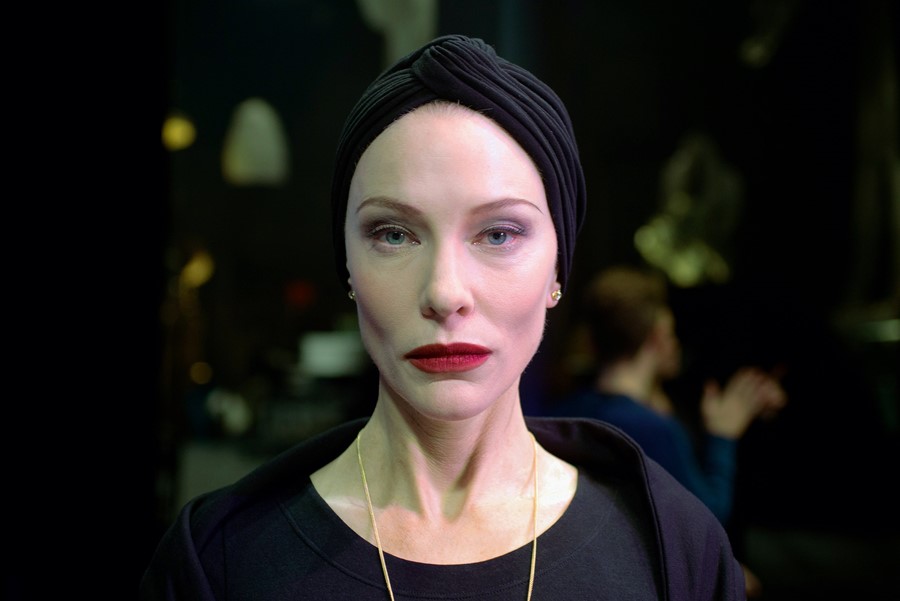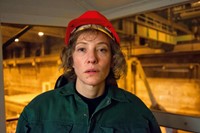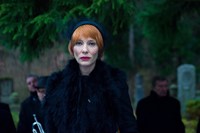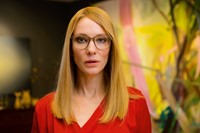As his weird and wonderful new film Manifesto arrives on UK screens, German filmmaker Julian Rosefeldt discusses its anti-populist message and the awe-inspiring talent of its star
“A lot of my work is about cinema – about its rules, which have barely changed in 100 years of filmmaking; I try to find out why that’s the case and break with the rules sometimes to find out more about it,” say Julian Rosefeldt, the German artist and filmmaker behind Manifesto. The new film, stars Cate Blanchett in 13 varying guises, from an 80s London punk, a grieving widow and a wild-eyed homeless man with a drunken Scottish drawl, to an anchorwoman, as well as the reporter she’s corresponding with, and a severe Russian choreographer. In each role, Blanchett performs what Rosefeldt describes as a “text collage”, woven together by the artist from around 53 manifestos – many artistic, some cinematic and others political and sociopolitical in nature.
This is the first linear feature film that Rosefeldt has made, and it is the byproduct of a much acclaimed video installation, first shown in 2015, featuring an extra hour’s worth of footage of its captivating protagonists, and shown on multiple screens. “Cate and I met seven years ago at an exhibition of my work in Berlin,” Rosefeldt tells us over the phone from the German capital. “We were introduced by a mutual friend and very spontaneously had the idea of doing something together, but we didn’t know what. Three years later, when I was doing research for another project, I began rereading manifestos that I’d encountered during my studies and as I did, I began picturing Cate not only reading these texts, but thinking them, becoming them.”
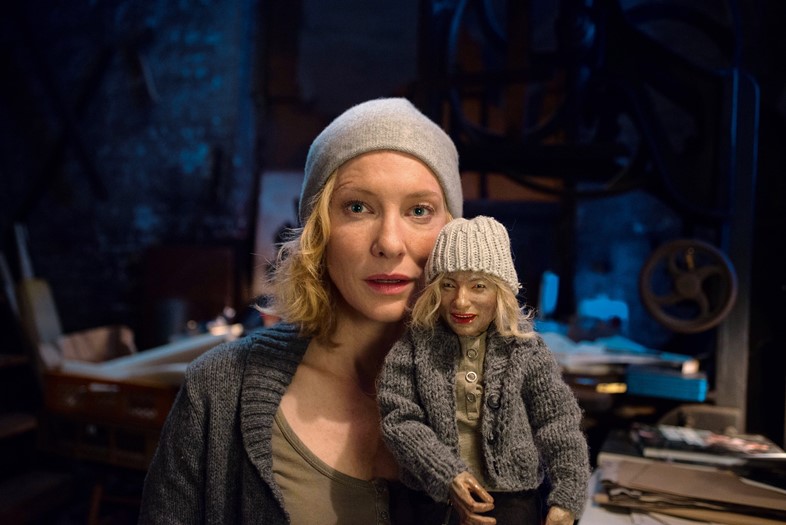
He approached the Australian actress with the idea and the duo discussed the logistics of funding the installation, soon coming to the conclusion that creating a filmic version would be the best way to secure the sizeable budget they required. “I also liked the idea of these manifestos reaching a much wider audience than they would in an art context,” Rosefeldt explains, “especially because of Cate’s amazing talent and reputation. Having it watched by movie-goers follows on from the idea of the manifesto originally being printed on a leaflet and thrown to the masses.”
The film is a bizarre, brilliantly idiosyncratic experience; Blanchett, ever the able chameleon – think her portrayal of Bob Dylan in Todd Haynes’ I’m Not There, and her bipartite performance in Jim Jarmusch’s Coffee and Cigarettes – brings the medley of manifestos to vivid life through her masterful methods of delivery, by turns disturbing, funny, nonsensical and insightful, and sometimes strangely sad. “During the funeral scene she had the extras in tears,” Rosefeldt says with audible awe. “She delivered these Dada instructions and it was absolutely overwhelming.” Here, as the film hits UK screens, we sit down with the artist to hear more about the film’s realisation, its magnificent, JG Ballard-esque locations, and its inherent anti-populist message.
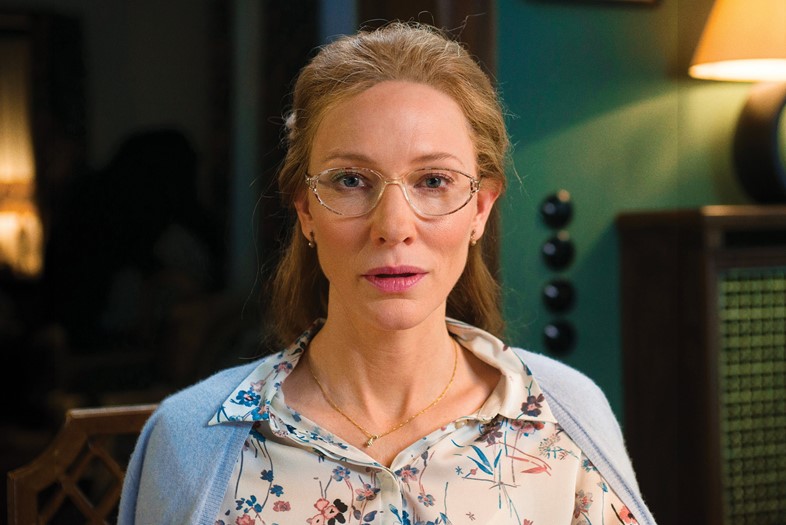
On the challenge of turning the art installation into a film...
“We focused almost completely on the installation during shooting because we had so little time. Bobby Good, the editor, and I thought it’d be easy to put the footage into linear form thereafter, but we found the complete opposite. The film was extremely boring at the beginning, when we presented it in chronological chapters. When you sit in a movie, you expect to be taken by the hand and guided through a story but here there was no story so we had invent a visual narration, a visual trip, to pull people in. In the first ten minutes of the film there’s always a lot of sighing – like, ‘What is this?’ – and then we seem to hypnotise the audience and make them stay.”
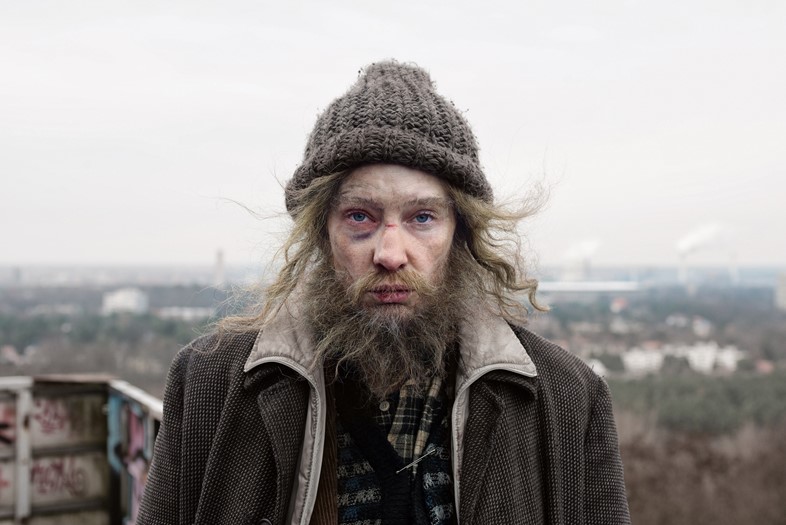
On devising the characters…
“Cate and I began with many more characters than the ones who appear in the film and then narrowed them down to a list that was doable, timewise – we only had 11 days to shoot in Berlin. I had to bargain with Cate a little. I remember she said, ‘Could we maybe do six characters?’ And I said, ‘Could we do 20?’ And in the end we did 13. We met up for two days in New York a couple of months before shooting to go through all the characters and the text collages and decide which accent would work best for each, but when we started shooting, we still allowed for flexibility in the way Cate delivered the monologues. She would always surprise us, sometimes even on the first take, with how she would sculpt the idea. She kept pulling rabbits out of hats – it’s almost witch power. She’s just very, very good.”
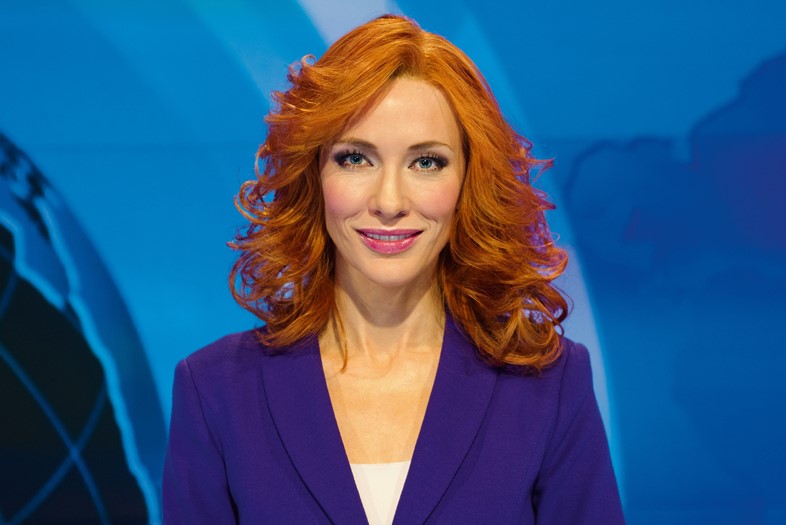
On the spectacular locations...
“Locations are very important to my work, but in my projects they aren’t descriptions. They’re don’t really say or announce what the action is, unlike in a narrative movie where you see a location and understand the context of the scene. I do the opposite and often use them as a question mark to the audience, to make them think, ‘What is this? I’ve never seen such a thing before.’ That kind of activates you as a viewer, so you become more attentive, and the spoken text then becomes even more clear.”
On his favourite memories from shooting...
“It was very funny to meet Cate as a new character every morning in the make-up van – and she’d be in character as we had so little time. Sometimes she’d stay in character during the lunch break, which made for some very funny moments. I remember she had lunch with the team while playing the homeless man and said (puts on gruff Scottish accent), ‘Give me the salt and the pepper.’ She was so professional – why would you give away that precious rehearsal time?”

On the continued relevance of manifestos...
“Apart from Manifesto being a love declaration to all these beautiful writings of all these different artists, I wanted to ask if their ideas are applicable today, if they are relevant, and I would say that they absolutely are. When I’ve attended post-screening Q&As, the audiences always refer directly to the political landscape of the place where we’re showing the film or installation. Many see it as an answer to the threatening rise of populism all over the world, where people are loud and angry without any kind of content. The artists who wrote these manifesto texts are loud and angry too, but they have a lot to say and they’re creative and inspiring, and there’s a lot to be learned from their writing. So I think it’s a very good answer to populism.”
On the best manifesto for newcomers to read...
“If you’re focusing on artists’ manifestos, why not start with the first one ever published, which was the Futurist manifesto in 1909? It was published on page one of Le Figaro, the newspaper in France; just imagine The Guardian publishing an artist’s manifesto on its front page today. It’s quite astonishing. That manifesto is interesting because it has a lot of very radical ideas in it but it’s also disturbing because the Futurists were fascist sympathisers. So it has everything in it that a manifesto can have – a certain arrogance, utopian ideas and also a sense of playing with fire.”
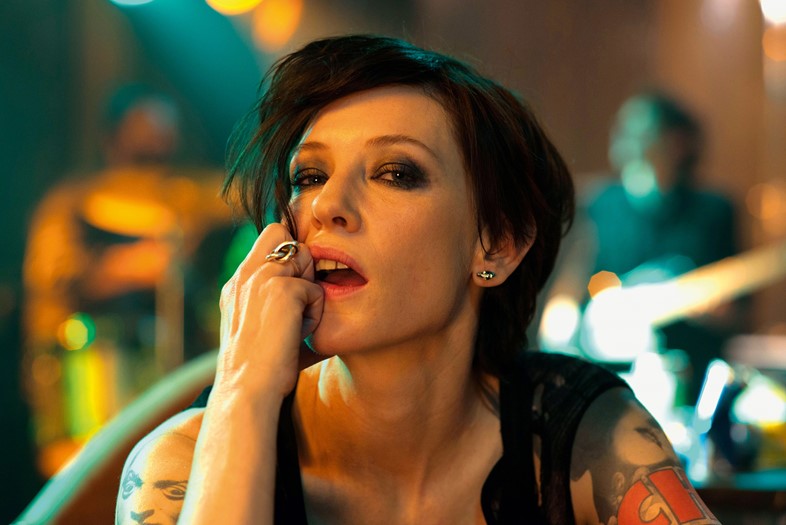
Manifesto is in select cinemas nationwide from today.
